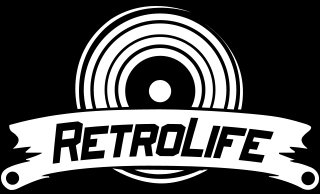Vinyl records have made a remarkable comeback, captivating audiophiles and casual listeners alike with their warm, analog sound. However, choosing the right turntable can be overwhelming, especially with the various types available on the market. In this article, we will explore the three main types of turntables: direct drive, belt drive, and deek drive. Understanding their differences and benefits will help you make an informed decision for your vinyl setup.
Direct Drive Turntables
- Mechanism and Design
Direct drive turntables feature a motor directly attached to the platter. This design allows the platter to start and stop quickly, providing precise control over the playback speed. The direct connection between the motor and the platter eliminates the need for intermediary parts, reducing maintenance requirements.
- Advantages
Quick Start and Stop: Ideal for DJs and turntablists who require immediate control over their records.
Consistent Speed: Offers stable playback speed, ensuring accurate sound reproduction.
Durability: Fewer moving parts mean less wear and tear, resulting in a longer lifespan.
- Disadvantages
Motor Noise: The direct connection can sometimes lead to motor noise being picked up by the stylus, affecting sound quality.
Higher Cost: Generally more expensive due to the advanced technology involved.
Belt Drive Turntables
- Mechanism and Design
Belt drive turntables use an elastic belt to connect the motor to the platter. This belt absorbs motor vibrations, preventing them from reaching the platter and the stylus. The result is a quieter operation and improved sound quality.
- Advantages
Superior Sound Quality: The isolation of motor vibrations leads to cleaner audio playback.
Affordability: Typically more budget-friendly than direct-drive turntables.
Simple Maintenance: Easy to replace the belt if it wears out.
- Disadvantages
Slower Start-Up Time: The belt-driven mechanism takes longer to reach the desired speed.
Belt Wear: Over time, the belt can stretch or break, requiring replacement.
Deck Drive Drive Turntables
- Mechanism and Design
Deck drive turntables use a wheel to transfer energy from the motor to the platter. This design was popular in the early days of vinyl but has become less common due to advancements in other types of turntables.
- Advantages
High Torque: Provides strong rotational force, making it suitable for heavy-duty use.
Vintage Appeal: Preferred by some audiophiles for its nostalgic value and classic design.
- Disadvantages
Noise and Vibration: The wheel can introduce noise and vibration, negatively impacting sound quality.
Maintenance: More complex mechanism requiring regular maintenance and adjustments.
Choosing the Right Turntable
When selecting a turntable, consider your specific needs and preferences:
For DJs and Professionals: Direct drive turntables are the go-to choice due to their quick response time and robust performance.
For Audiophiles: Belt drive turntables offer superior sound quality, making them ideal for dedicated listening environments.
For Vintage Enthusiasts: Deck drive turntables provide a nostalgic experience but require more upkeep.
Conclusion
Understanding the differences between direct drive, belt drive, and deck drive turntables will help you choose the best option for your vinyl collection. Whether you prioritize sound quality, ease of use, or vintage appeal, there is a turntable type to match your needs. Investing in the right turntable will enhance your listening experience and allow you to fully appreciate the rich, warm sound of vinyl records.


